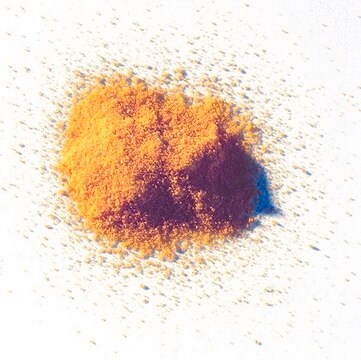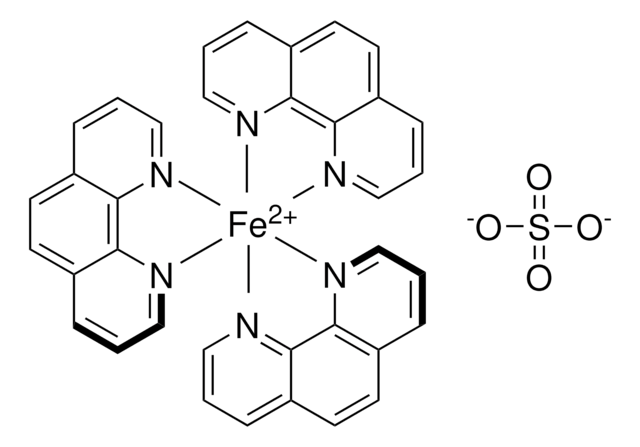229547
Ammonium cerium(IV) nitrate
≥99.99% trace metals basis
Synonyme(s) :
Ceric ammonium nitrate
About This Item
Produits recommandés
Qualité
for analytical purposes
Essai
≥99.99% trace metals basis
Forme
crystalline
Pertinence de la réaction
reagent type: oxidant
Impuretés
≤100.0 ppm Trace Metal Analysis
Chaîne SMILES
N.N.[Ce+4].O[N+]([O-])=O.O[N+]([O-])=O.[O-][N+]([O-])=O.[O-][N+]([O-])=O.[O-][N+]([O-])=O.[O-][N+]([O-])=O
InChI
1S/Ce.2HNO3.4NO3.2H3N/c;6*2-1(3)4;;/h;2*(H,2,3,4);;;;;2*1H3/q+4;;;4*-1;;
Clé InChI
WIBGOERAEYJBOT-UHFFFAOYSA-N
Vous recherchez des produits similaires ? Visite Guide de comparaison des produits
Application
Mention d'avertissement
Danger
Mentions de danger
Conseils de prudence
Classification des risques
Acute Tox. 4 Oral - Aquatic Acute 1 - Aquatic Chronic 1 - Eye Dam. 1 - Met. Corr. 1 - Ox. Sol. 2 - Skin Corr. 1B - Skin Sens. 1A
Code de la classe de stockage
5.1B - Oxidizing hazardous materials
Classe de danger pour l'eau (WGK)
WGK 3
Équipement de protection individuelle
Eyeshields, Gloves, type P3 (EN 143) respirator cartridges
Faites votre choix parmi les versions les plus récentes :
Déjà en possession de ce produit ?
Retrouvez la documentation relative aux produits que vous avez récemment achetés dans la Bibliothèque de documents.
Les clients ont également consulté
Articles
Oxidation and reduction reactions are some of the most common transformations encountered in organic synthesis
The rare earth elements impact nearly everyone in the world. All of the people living in advanced technological countries and almost all those living in third world countries utilize the rare earths in their everyday living—the car that one drives (gasoline is refined from oil using rare earth catalysts and catalytic converters reduce the polluting emissions from the automotive exhaust), watching the news on TV (the red and green colors in TV screens), the telephones and computers we use to communicate (the permanent magnets in speakers and disc drives), just to name a few examples.
Notre équipe de scientifiques dispose d'une expérience dans tous les secteurs de la recherche, notamment en sciences de la vie, science des matériaux, synthèse chimique, chromatographie, analyse et dans de nombreux autres domaines..
Contacter notre Service technique













